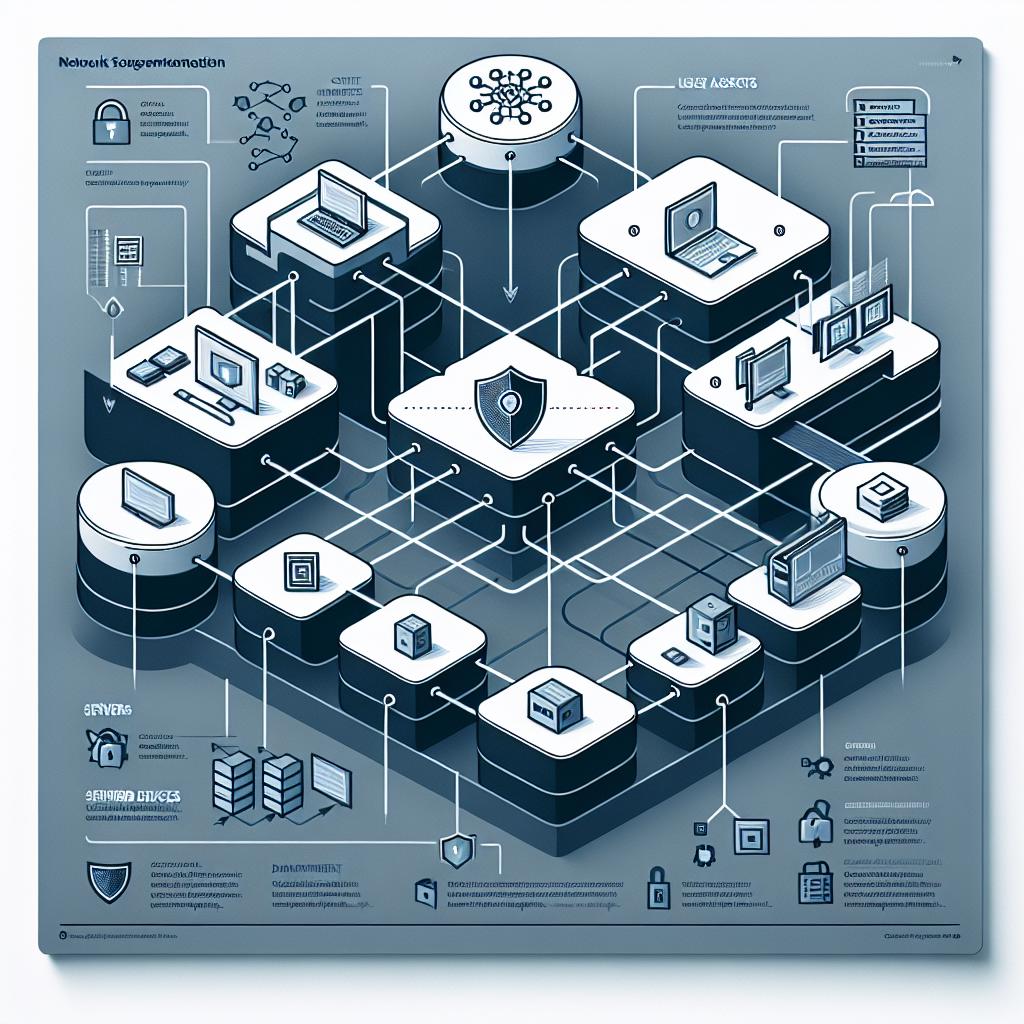Network segmentation is a vital strategy in the realm of cybersecurity, designed to enhance the security posture of organizations by dividing a network into smaller, manageable segments. This approach not only improves security but also optimizes performance and simplifies compliance with regulatory requirements. In this blog post, we will explore the concept of network segmentation, its benefits, best practices, and how it can be effectively implemented.
What is Network Segmentation?
Network segmentation involves dividing a computer network into smaller, isolated segments or sub-networks. Each segment can have its own security policies and controls, which helps to limit the potential impact of a security breach. By isolating sensitive data and critical systems, organizations can reduce the attack surface and contain threats more effectively.
Benefits of Network Segmentation
-
Improved Security: By isolating sensitive data and critical systems, network segmentation minimizes the risk of unauthorized access. If a breach occurs in one segment, it can be contained, preventing lateral movement across the network.
-
Enhanced Performance: Segmentation can improve network performance by reducing congestion. By limiting broadcast traffic to specific segments, organizations can ensure that critical applications have the bandwidth they need to function optimally.
-
Simplified Compliance: Many regulatory frameworks, such as PCI DSS and HIPAA, require organizations to implement specific security measures to protect sensitive data. Network segmentation can help meet these requirements by isolating sensitive data and applying tailored security controls.
-
Easier Monitoring and Management: With a segmented network, it becomes easier to monitor traffic and detect anomalies. Security teams can focus on specific segments, making it simpler to identify and respond to potential threats.
-
Reduced Attack Surface: By limiting access to sensitive areas of the network, organizations can significantly reduce their attack surface. This makes it more difficult for attackers to gain access to critical systems and data.
Best Practices for Network Segmentation
-
Identify Critical Assets: Begin by identifying the most critical assets within your network. This includes sensitive data, critical applications, and systems that require enhanced security measures.
-
Define Segmentation Strategy: Determine how you will segment your network. Common strategies include:
- By Function: Grouping devices based on their function (e.g., separating user devices from servers).
- By Department: Isolating departments (e.g., finance, HR) to protect sensitive information.
- By Sensitivity: Creating segments based on the sensitivity of the data being processed.
-
Implement Access Controls: Establish strict access controls for each segment. Use firewalls, access control lists (ACLs), and role-based access controls (RBAC) to ensure that only authorized users can access specific segments.
-
Monitor Traffic: Continuously monitor traffic between segments to detect any unusual activity. Implement intrusion detection systems (IDS) and intrusion prevention systems (IPS) to enhance your monitoring capabilities.
-
Regularly Review and Update Segmentation: As your organization evolves, so should your network segmentation strategy. Regularly review and update your segmentation to ensure it aligns with current business needs and security threats.
-
Educate Employees: Ensure that employees understand the importance of network segmentation and their role in maintaining security. Conduct regular training sessions to keep them informed about best practices and potential threats.
Implementing Network Segmentation
Implementing network segmentation requires careful planning and execution. Here are the steps to effectively implement segmentation in your organization:
-
Assessment: Conduct a thorough assessment of your current network architecture. Identify vulnerabilities, critical assets, and areas that require segmentation.
-
Design: Create a detailed design for your segmented network. This should include diagrams that illustrate how segments will be configured and how traffic will flow between them.
-
Deployment: Begin deploying the segmentation strategy. This may involve configuring firewalls, switches, and routers to enforce segmentation policies.
-
Testing: After deployment, conduct thorough testing to ensure that segmentation is functioning as intended. Verify that access controls are in place and that traffic is being appropriately restricted.
-
Documentation: Document your segmentation strategy, including policies, procedures, and configurations. This documentation will be invaluable for future audits and reviews.
-
Continuous Improvement: Network segmentation is not a one-time effort. Continuously assess and improve your segmentation strategy to adapt to new threats and changes in your organization.
Conclusion
Network segmentation is a crucial strategy for enhancing security in today’s complex digital landscape. By dividing networks into smaller, isolated segments, organizations can significantly reduce their risk of data breaches, improve performance, and simplify compliance efforts. By following best practices and implementing a well-thought-out segmentation strategy, organizations can create a more secure and resilient network environment. As cyber threats continue to evolve, adopting robust network segmentation will be essential for safeguarding sensitive data and maintaining operational integrity.


